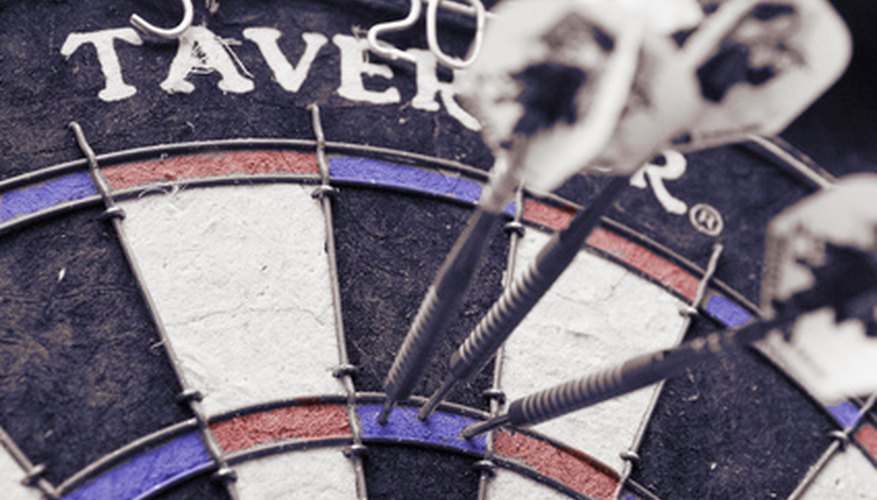Darts, like all games, requires practice and patience. Learning the fundamentals of the game and how to execute a throw do not guarantee a perfect throw. For right-handed players, darts frequently go to the left of the intended target, reducing accuracy and limiting scoring potential. There are easy ways to prevent your darts from going to the left, but they require practice, focus and willingness to adapt.
- Darts, like all games, requires practice and patience.
- There are easy ways to prevent your darts from going to the left, but they require practice, focus and willingness to adapt.
Make sure you are lined up with the dartboard. Keep your dominant foot close to the line and your other foot slightly behind it. Stay in place while you throw your darts--don't step forward or shift your hips.
Keep your elbow up when you throw. Dropping your elbow as you throw a dart can drastically change the dart's path. For right-handed players, the dart will frequently drift left.
Grasp the dart with your thumb and index finger along the ridges or grooves just behind the tip. Keep the dart parallel to the ground as you prepare to throw.
Keep your eyes on the dartboard as you throw. Beginning players often look at the dart as they prepare to throw, causing it to go off course. Keep your eyes on your target to make the dart fly straighter.
- Keep your elbow up when you throw.
- Keep your eyes on your target to make the dart fly straighter.
Practice your toss before you release the dart. Rather than throwing the dart quickly, simply move your forearm back and forth and release the dart in a fluid motion, letting the dart fly rather than throwing it too hard or forcing it.
